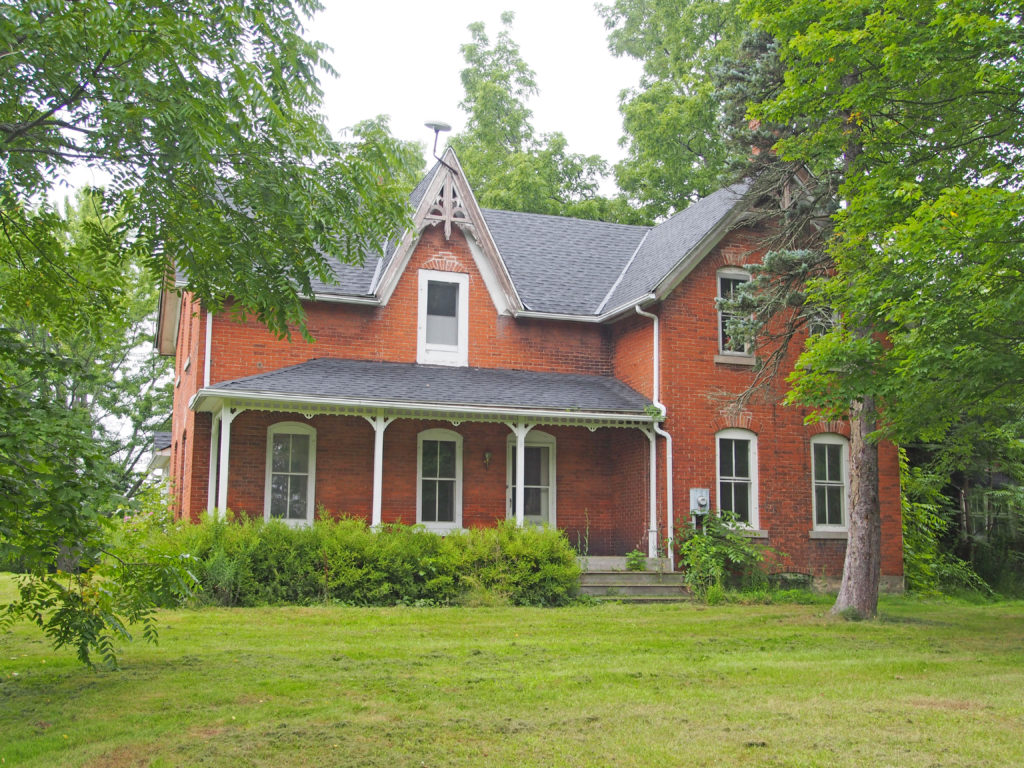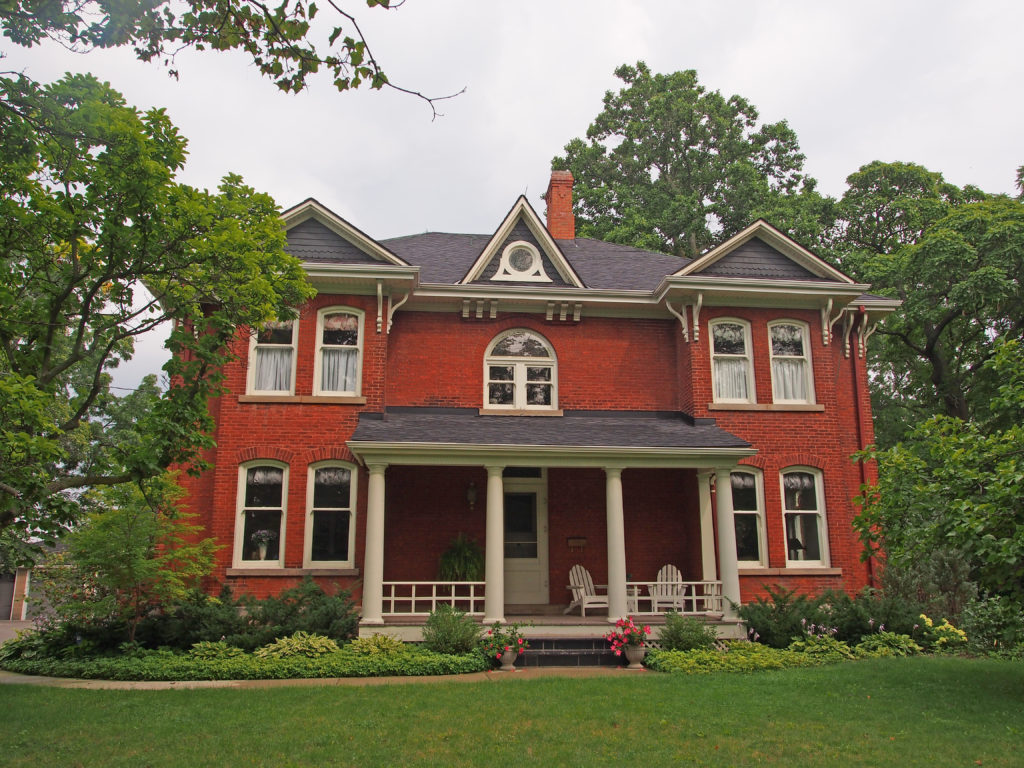Fenwick is a community in the in the town of Pelham located in the Niagara Region. Welland is the closest city center. The community was named in 1853. The name probably comes from Fenwick, East Ayrshire in Scotland, which was the birthplace of Dr. John Fraser, who was reeve of Pelham Township at the time.
Ridgeville is a community within the town of Pelham. It borders the western limit of Fonthill. It derives its name from its location on the south western ridge of the Fonthill Kame. It has a post office, a rural mail route named Ridgeville, a small number of shops found along Canboro Road, including a bakery, chocolate shop and specialty home and bath shops, the local high school, Gwennol Organic Blueberry Farm and the Berry Patch Tea Room.
Fonthill is a community in the town of Pelham. It has a few small industries, but is primarily a residential suburb known for its fruit orchards, nature trails, and neighborly attitude.
Fonthill shares its name with the Fonthill Kame, on which it is located, formed by glacial deposits. Effingham Creek, a cold-water stream, originates in the glacial silts and sands of Short Hills area of the moraine, northwest of Fonthill. Effingham Creek is a tributary to Twelve-Mile Creek, which empties into Lake Ontario.
The Fonthill Kame is a geological feature in the form of a large, isolated hill composed of sand and gravel deposited by the retreating glaciers of the last ice age. The Fonthill Kame rises about 75 meters (246 feet) above the surrounding land and is the highest elevation in the region. The kame is 6 kilometers (4 miles) east to west and 3 kilometers (2 miles) north to south. It slopes gradually on the west side, more steeply on the south and east and merges with the Short Hills Provincial Park area of the Niagara Escarpment on the north. The Fonthill Kame influences the climate of Pelham by sheltering it from the winds from the southwest. This provides good growing conditions for fruit crops, including the grape vines that supply the local wine industry. It is also mined for sand and gravel.
Letters written by Henry Giles, a settler who came to the area in 1840, suggest that he chose the name Fonthill because the area looked similar to the area around Fonthill Abbey in England. The village’s first post office was established in 1856. On June 10, 2006, Fonthill celebrated its 150th anniversary. The celebration was marked by the opening of the band stand (a replica of the original bandstand that existed in the early 1900s), historical displays and a variety of musical and artistic presentations.
On a clear day, the tall buildings of Niagara Falls to the East and the Toronto skyline to the North are clearly visible from a vantage point near Effingham Street and south Tice Road just west of Fonthill. This also allows views of Lake Ontario, Lake Erie, and the skyline of Buffalo.
In 1970, the Town of Pelham unified five historical communities: Fonthill, Ridgeville, Effingham, North Pelham and Fenwick into a single town covering more than one hundred and twenty-six thousand square kilometers. This integration brought together a mix of farming (agriculture) and commercialism.
The Town of Pelham is located in the center of Niagara Region. The town’s southern boundary is formed by the Welland River, a meandering waterway that flows into the Niagara River. To the west is the township of West Lincoln, to the east the city of Welland, and to the north the city of St. Catharines. Pelham Township was part of Welland County since the late 1780s. The Town of Pelham derived its name from Pelham Township which was named by John Graves Simcoe in the 1790s. Simcoe gave names to the Townships of Niagara that were created to provide land for Loyalist refugees, disbanded troops former rangers and others after the British defeat in the Revolutionary War (which ended in 1783). The policy of Simcoe was to adopt township names from England.















